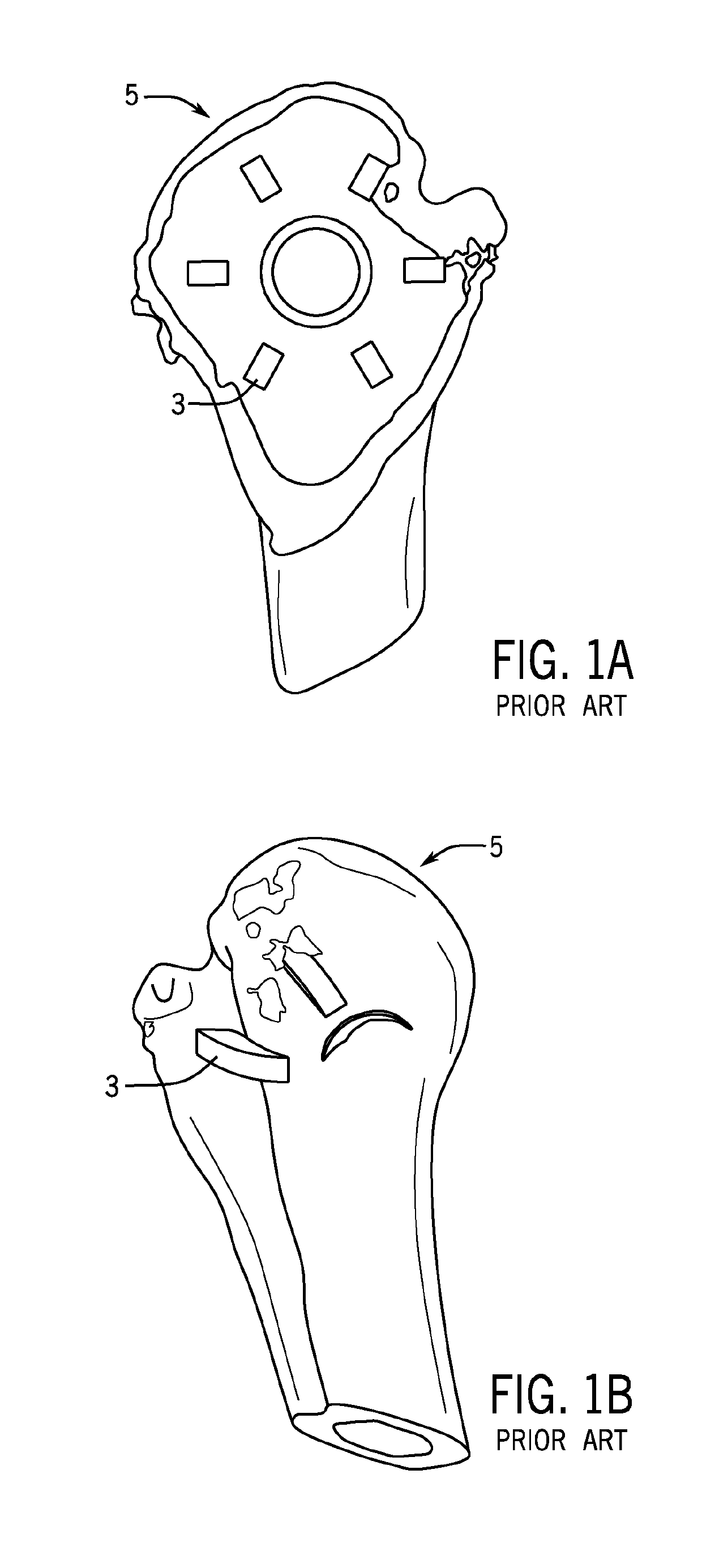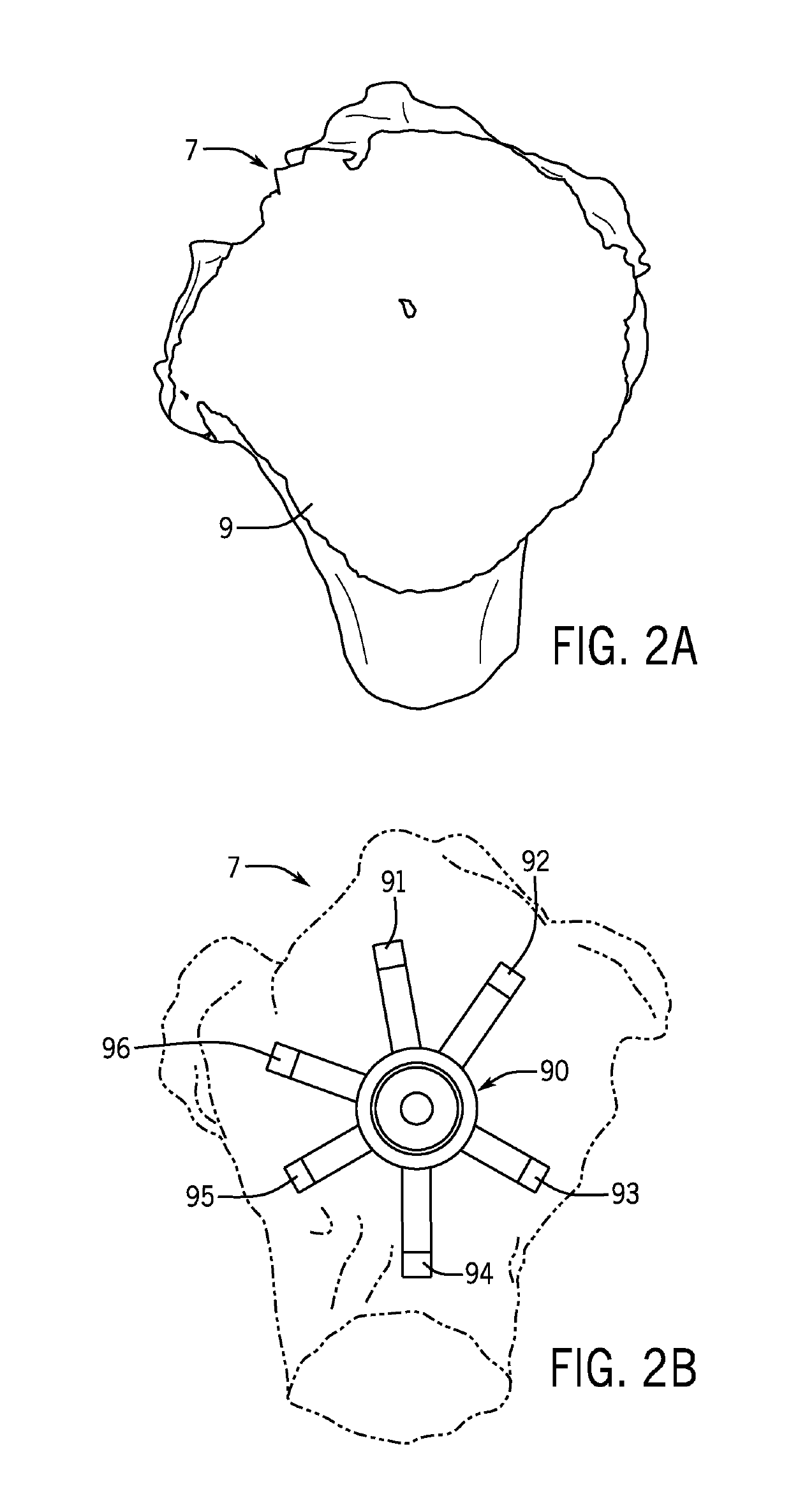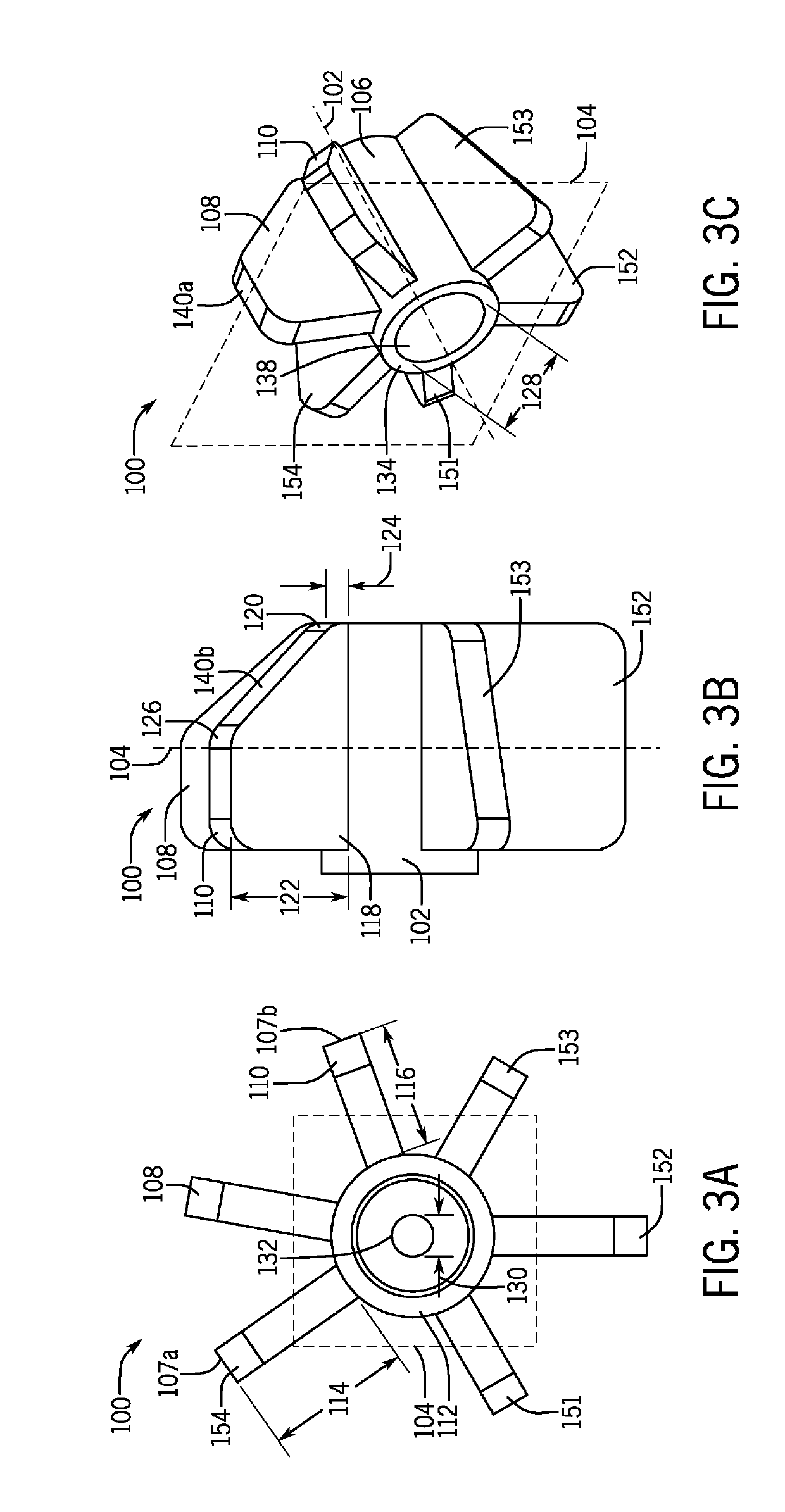Method for Modeling Humeral Anatomy and Optimization of Component Design
a humeral anatomy and component design technology, applied in the direction of shoulder joints, instruments, prostheses, etc., can solve the problems of lack of long-term bone ingrowth, catastrophic early component loosening, and the breadth of shoulder surgery complications associated with devices that are not anatomically correct, so as to facilitate and improve joint prosthetic component design, improve the understanding of proximal humeral anatomy, and optimize loading and fit.
- Summary
- Abstract
- Description
- Claims
- Application Information
AI Technical Summary
Benefits of technology
Problems solved by technology
Method used
Image
Examples
example
[0119]The following Example has been presented in order to further illustrate the invention and is not intended to limit the invention in any way.
A. Background
[0120]There has been a drive towards bone preserving and less invasive procedures. However, significant deficiencies have been found in currently available devices, specifically they are not anatomic in shape. Many of the devices used are round with a uniform shape. As devices become smaller to accommodate less invasive procedures and are placed under increased stress at the device bone interface, there has been concern about early catastrophic loosening as well as long term bone ingrowth. In an effort for surgeons to maximize contact with native bone, there is a growing tendency for intra-operative fractures due to surgeons forcing a non-anatomic device in an anatomic space or placing an implant that penetrates the cortical bone creating a substantial risk of a stress riser with increased risk of future fracture.
[0121]In orde...
PUM
| Property | Measurement | Unit |
|---|---|---|
| height | aaaaa | aaaaa |
| width | aaaaa | aaaaa |
| angle | aaaaa | aaaaa |
Abstract
Description
Claims
Application Information
 Login to View More
Login to View More - R&D
- Intellectual Property
- Life Sciences
- Materials
- Tech Scout
- Unparalleled Data Quality
- Higher Quality Content
- 60% Fewer Hallucinations
Browse by: Latest US Patents, China's latest patents, Technical Efficacy Thesaurus, Application Domain, Technology Topic, Popular Technical Reports.
© 2025 PatSnap. All rights reserved.Legal|Privacy policy|Modern Slavery Act Transparency Statement|Sitemap|About US| Contact US: help@patsnap.com



